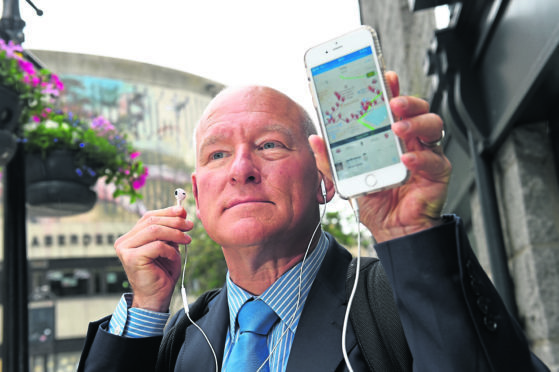While the Green in Aberdeen is home to charming shops and impressive street art, it is also the heartland of one of the murkiest periods in the city’s history.
In the mid-1700s as many as 600 children were kidnapped off the streets and sold into slavery, with many vanishing from the city centre.
The most famous of them, Aboyne boy Peter Williamson – known as Indian Peter after a brush with Cherokee Indians – eventually returned to Scotland and made a living selling his book about the ordeal.
The story is now being told, step by step, as part of a unique series of self-guided walking tours.
Developed by Robert Gordon University engineering manager Bryan Atchison, they only require a smartphone with a GPS signal, using it to track a person’s location and play them the relevant clips as they walk around the city.
He said: “I’m from an international family so we have done lots of touring in Scotland.
“A number of times I’ve been somewhere and thought: ‘I wonder what that is,’ or ‘What’s the story behind this?’
“Telephone technology has progressed to the point that hopefully the general public will want to use this sort of thing.”
So far Mr Atchison has created three different routes throughout Aberdeen.
Alongside his guide to piracy and slavery, he has developed a Union Street tour highlighting the city’s granite heritage and a guide to RGU’s Garthdee campus.
He said: “There are a wealth of things we can do.
“There are another two or three ideas I’d like to do from a walking perspective, and then I want to look at driving tours.
Mr Atchison added: “Scotland has unique aspects in its culture, history and heritage and has been voted the world’s most beautiful country in 2017 by the Rough Guide.
“The Scottish north-east is part of this growth in tourism – thousands of people come to visit Aberdeen and Aberdeenshire attractions.
“A huge number of international students and their families come every year and they can now take advantage of the opportunity to explore Aberdeen, as well as RGU.”
For more information visit
voicemap.me/tour/aberdeen
.
